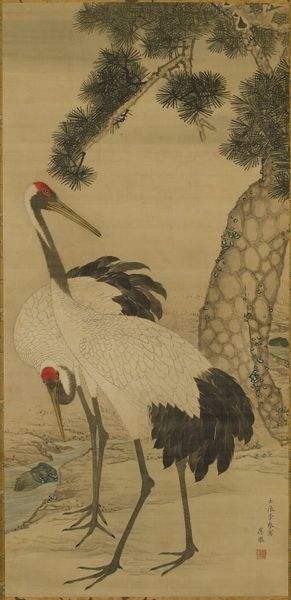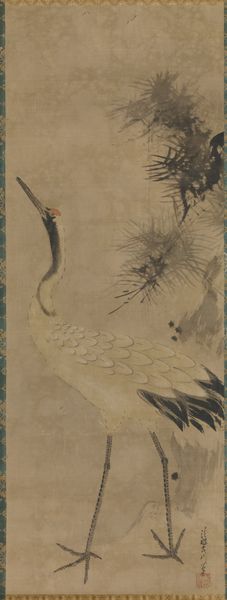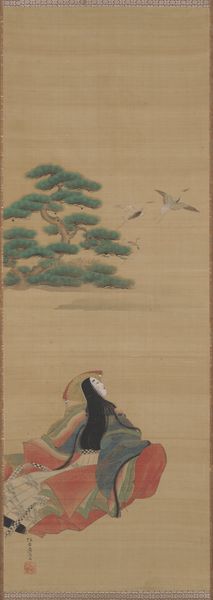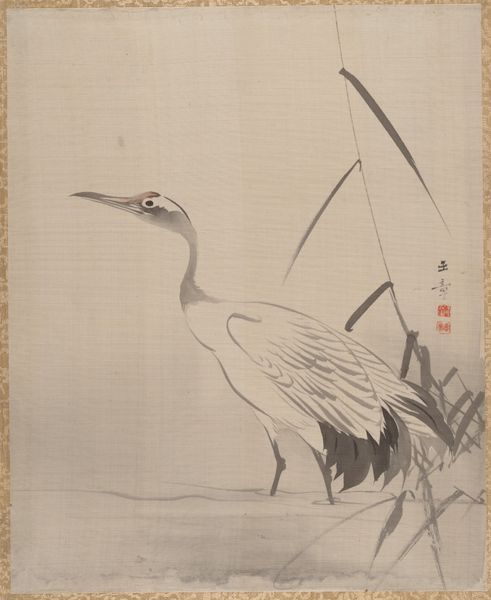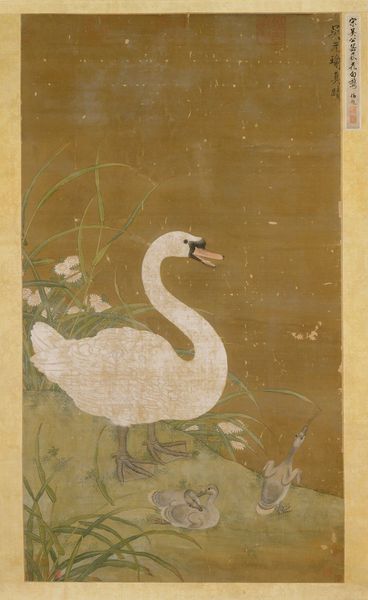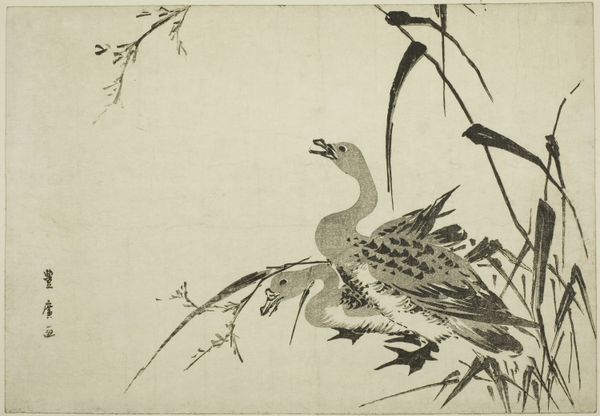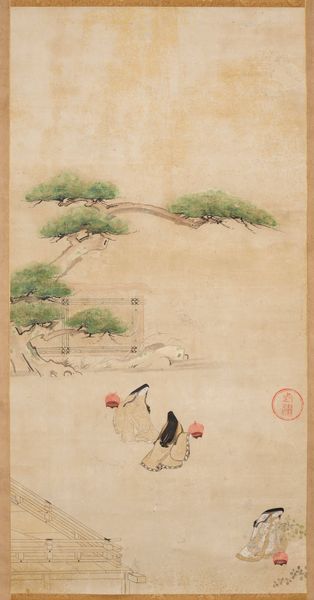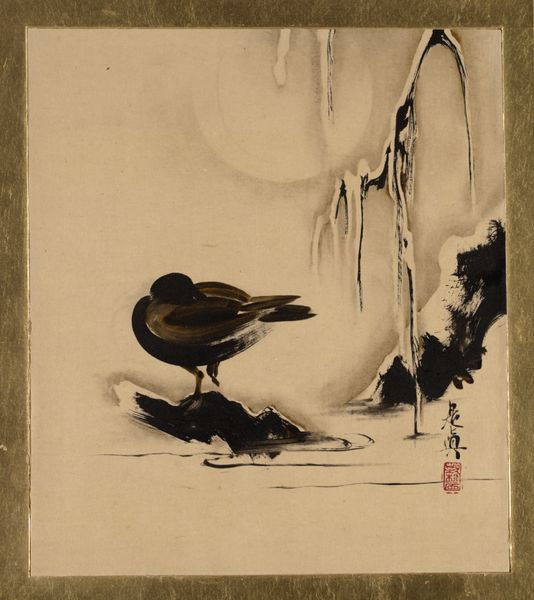![Crane with Pine [left of a triptych of White-Robed Kannon and Cranes] by Kano Tan'yū](/_next/image?url=https%3A%2F%2Fd2w8kbdekdi1gv.cloudfront.net%2FeyJidWNrZXQiOiAiYXJ0ZXJhLWltYWdlcy1idWNrZXQiLCAia2V5IjogImFydHdvcmtzLzcyZmFjZDBlLTJiMmItNGM0YS04MmNkLTE5MGJkZTFmY2ExNS83MmZhY2QwZS0yYjJiLTRjNGEtODJjZC0xOTBiZGUxZmNhMTVfZnVsbC5qcGciLCAiZWRpdHMiOiB7InJlc2l6ZSI6IHsid2lkdGgiOiAxOTIwLCAiaGVpZ2h0IjogMTkyMCwgImZpdCI6ICJpbnNpZGUifX19&w=3840&q=75)
Crane with Pine [left of a triptych of White-Robed Kannon and Cranes] 1664
0:00
0:00
paper, ink-on-paper, ink
#
asian-art
#
landscape
#
japan
#
figuration
#
paper
#
ink-on-paper
#
ink
#
line
Dimensions: 44 3/8 × 16 3/16 in. (112.71 × 41.12 cm) (image)76 7/8 × 20 3/4 in. (195.26 × 52.71 cm) (mount, without roller)
Copyright: Public Domain
This hanging scroll, 'Crane with Pine' by Kano Tan'yū, presents a study in delicate contrasts, rendered in ink and light color on paper. A composition of verticals and diagonals, the scroll depicts a crane standing gracefully beside a bamboo stalk. The limited palette enhances the contemplative mood, drawing us into a world of subtle tones and textures. Tan'yū masterfully employs asymmetry to create a dynamic yet balanced image. The crane, positioned off-center, engages in a visual dialogue with the bamboo, suggesting themes of longevity and resilience. Through the artist's formal arrangement, we see the convergence of Taoist and Zen aesthetics, emphasizing the harmony between nature and the self. Notice how the negative space surrounding the crane amplifies its presence, inviting introspection. Here, form transcends mere representation, serving as a conduit to explore philosophical depths.
Comments
minneapolisinstituteofart about 2 years ago
⋮
Avalokiteshvara, known in Japanese as Kannon, is one of the most popular deities in Zen Buddhism. From the 1300s through the 1500s, Zen painters in Japan frequently created monochrome ink paintings of Kannon relaxing in nature. Nearly 200 years later, a professional painter, Kano Tan’yū, borrowed from this long tradition for this triptych, showing the deity in the center resting on a boulder beneath a waterfall and gazing down at the waves below. As is common with devotional triptychs, the central deity is flanked by complementary images of birds, in this case cranes with bamboo and a pine tree.
Join the conversation
Join millions of artists and users on Artera today and experience the ultimate creative platform.
